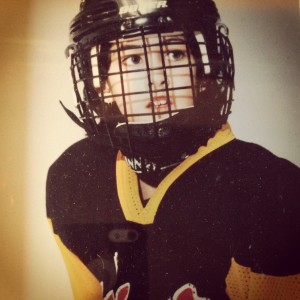Write a blog that hyper-links your research on the characters in GGRW according to the pages assigned to you (288-299). Be sure to make use of Jane Flick’s reference guide on your reading list.
I have a newer edition of Thomas King’s Green Grass Running Water and my pages probably don’t match up too well with the assigned numbers but bear with me because there is still so much to talk about! This novel is packed with what seems like endless allusions and references to stories, historical events, literature and influential or significant people of the past. Jane Flick’s article is dense in decoded information for this novel and will be of some assistance. I would love to share what I discovered to be most interesting.
Thought Woman: The third of four mythical women in GGRW, coming after First Woman and Changing Woman and before Old Woman, that falls from the sky and creates the world by thinking it into being. She appears in Leslie Silko’s novel Ceremony which emphasizes her role as a creator of the universe. This is a version of the creation myth as seen in Peublo/Navajo mythology.
Ts’ its’ tsi’ nako, Thought-Woman, is sitting in her room and what ever she thinks about
appears. She thought of her sisters, Nau’ ts’ ity’ i and I’ tcs’ i, and together they created the Universe
this world and the four worlds below. Thought-Woman, the spider, named things and
as she named them they appeared. She is sitting in her room thinking of a story now
I’m telling you the story she is thinking.
The four women correspond with the four life cycles – birth, youth, parent, elder – where Thought Woman is representative of ‘parent’, a giver of life. As Eli looks through his blurry, water covered windshield he makes out “four figures” while near them a “scraggly dog” is running in circles (King, 289). The number four is rich in native significance, relating to the medicine wheel, the four directions, the four season, and the four elements. And as Flick notes, “a dog (Canis familiaris) is, of course, a ‘lesser’ form of coyote (Canis latranis)—and a god is a backward kind of dog.” (Flick, 143). Right before the mention of the four figures, Eli has a conversation with Karen that abruptly ends with the mutual recognition of her impending death. These figures represent the cyclical dimension of life and death being a natural part of it.
Robinson Crusoe: A novel by Daniel Defoe, first published in 1719. Crusoe is the protagonist of the novel who is shipwrecked and winds up a castaway who spends years on a remote island, encountering many hardships before being rescued. The tale is perceived as being based upon the experience of Alexander Selkirk who lived four years as a castaway. We learn that Crusoe is a famous shipwrecked writer, though he doesn’t write novels, “He writes lists” (King, 293). These lists seem to be the pros and cons of Crusoe’s various situations. He lands upon a con saying “it has been difficult not having someone of color around whom I could educate and protect”, then right after landing upon the pro saying “now, you’re here” (King, 294) to Thought Woman. Here we have an insinuation that under “British civility” there is a responsibility to correct the way of life around them to their standards. It is interesting that the elder should say “You’re getting him [Crusoe] mixed up with Caliban” (King, 294), a beastly and mutated Shakespearean creature from The Tempest. Caliban is a character who welcomes the castaway, Prospero, and teaches him all there is to offer about the island and how to survive. In turn, Prospero makes Caliban his servant and treats him harshly because he is unable and unwilling to conform to Prospero’s way of life. Crusoe to me seems more like the character of Prospero but perhaps King is insinuating the beastliness of white supremacy.
Grey Owl: An Englishman Archie Belaney who was fascinated by Indian culture as a boy. He grew up devoting himself to learning about Natives and later became the famous Cree-Ojibwa writer and conservationist Grey Owl. Eli compares his life to Grey Owl because he wonders what he wants to become, he feels “trapped between two world” (King, 286), neither quite accepted as Indian or white. King segways this into an awkwardly placed line, “Ten little Indians“ (King 287). A reference to a famous children’s poem and to Agatha Christie’s novel, also known as And Then There Were None. I saw this as a way of King bringing awareness to the endangerment of Native culture, slowly dwindling in numbers.
Works Cited:
Austgen, Suzanne M.. “Leslie Marmon Silko’s Ceremony and the Effects of White Contact on Pueblo Myth and Ritual.” N.p., n.d. Web. 16 Mar. 2015. <<http://history.hanover.edu/hhr/hhr93_2.html>>
Flick, Jane. “Reading Notes for Thomas King’s Green Grass, Running Water.”Canadian Literature 161-62 (1999): 140-172. <<http://canlit.ca/pdfs/articles/canlit161-162-Reading(Flick).pdf>>
King, Thomas. Green Grass Running Water. Harper Perennial. Toronto. 2007. Print

